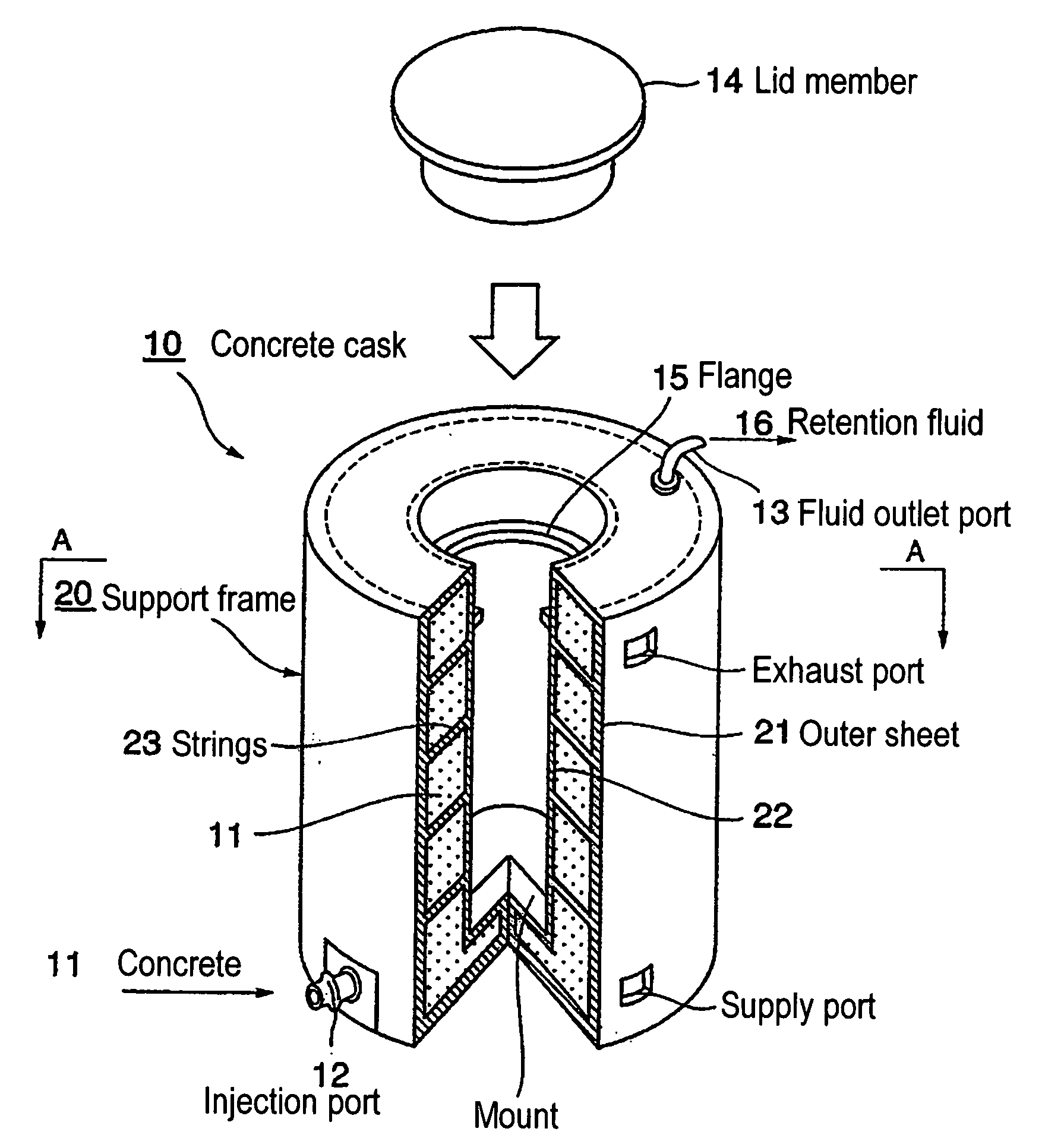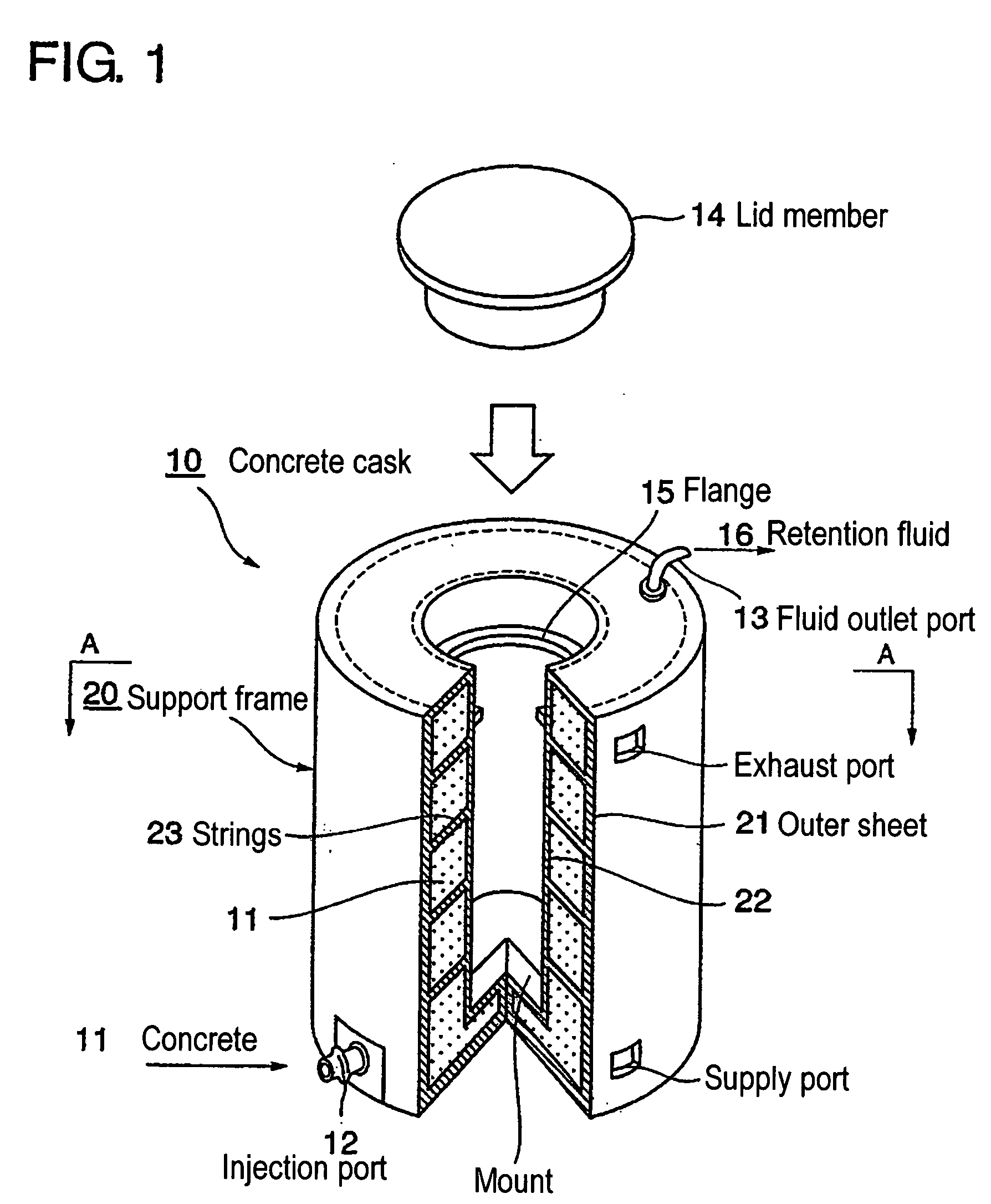Fiber-reinforced concrete cask, supporting frame for molding thereof and process for produicng the concrete cask
a technology of fiber reinforced concrete and supporting frame, which is applied in the direction of instruments, nuclear elements, nuclear engineering problems, etc., can solve the problems of difference in thermal expansion coefficient between concrete and steel reinforcing materials, cracks in concrete could be generated to damage containers, etc., to improve strength, durability and heat resistance, and facilitate fabrication. , the effect of reducing fabrication costs
- Summary
- Abstract
- Description
- Claims
- Application Information
AI Technical Summary
Benefits of technology
Problems solved by technology
Method used
Image
Examples
Embodiment Construction
[0033] Embodiments of the present invention will be described below with the reference of the attached drawings. In these embodiments, unless otherwise stated, any specific mention of such details as the dimensions, materials, or relative positioning of any of the component parts should not be construed as to limit the scope of this invention; they are merely included for purposes of explanation.
[0034]FIG. 1 shows a perspective view of an embodiment of a fiber reinforced concrete cask according to the present invention; FIG. 2 shows sectional views: (a) a sectional view along line A-A of FIG. 1, and (b) a sectional view along line B-B of FIG. 2(a); and FIG. 3 is a diagram showing the fabrication process for this embodiment of a fiber reinforced concrete cask according to the present invention.
[0035] This embodiment of a fiber reinforced concrete cask would be used as a container to store or transport radioactive material generated in a nuclear power plant such as spent fuel, recyc...
PUM
 Login to View More
Login to View More Abstract
Description
Claims
Application Information
 Login to View More
Login to View More - R&D
- Intellectual Property
- Life Sciences
- Materials
- Tech Scout
- Unparalleled Data Quality
- Higher Quality Content
- 60% Fewer Hallucinations
Browse by: Latest US Patents, China's latest patents, Technical Efficacy Thesaurus, Application Domain, Technology Topic, Popular Technical Reports.
© 2025 PatSnap. All rights reserved.Legal|Privacy policy|Modern Slavery Act Transparency Statement|Sitemap|About US| Contact US: help@patsnap.com



